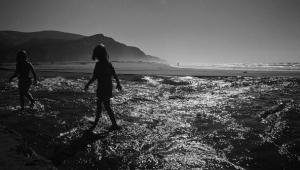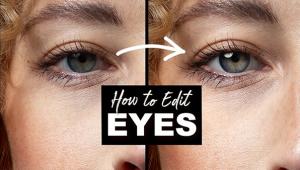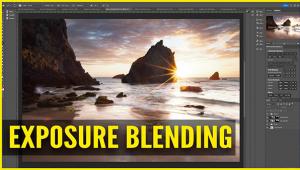Auto ISO: A New Twist In Exposure Control
The answer may come in the form of a new twist in exposure control: Auto ISO. You could think of this as another type of Shutter-Priority Exposure mode, or as a way to allow the automated systems in the camera to attain most any image effect you desire while freeing you to shoot more spontaneously.
Here’s how it works: When you set Auto ISO you can do it in two “levels.” One level is to simply set it and allow the exposure system to pick the most appropriate sensitivity the scene requires. Shooting in bright light? The Auto ISO will pick the lowest ISO available, as it did here image (#1) when it chose ISO 100. When the Auto ISO is chosen the system always biases exposure toward a faster shutter speed, taking the focal length of the lens into account, thus the exposure here was f/8 at 1/250 second. This yields the best image results, meaning that contrast and color are optimized and low or no noise will be evident. Most importantly, the shutter speed is fast enough, given the focal length you are shooting at, to keep the image steady. The system takes all kinds of variables into account and does the math for you.
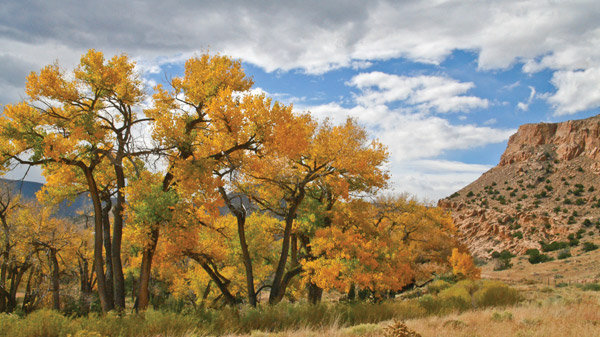
All Photos © George Schaub
Shooting in dimmer light? This photo of a hand carved and painted altar (#2) was made inside a church where flash and tripods are strictly forbidden. The system chose ISO 800 with an exposure of f/2.8 (the maximum aperture of the lens) at 1/60 sec.

There’s another aspect to Auto ISO that can be very helpful, even for advanced photographers. Using another layer of the menu controls you can set the highest ISO you want the camera to choose. You would make this choice based upon your testing of the camera to show where the quality from higher ISO settings begins to “fall off the cliff”. For some cameras this might be ISO 800, 1200 or even higher. In other words, you know that going beyond that point isn’t worth it.
In this scene the sun was well below the mountain and the light was quite dim overall (#3), but digital cameras will continue to bring in light regardless of how dark the scene might be. However, I knew that the digital camera I was working with started to show quite a bit of noise at ISO 1600, especially in underexposed, deep blue areas. I set the max ISO at 1000, and the system chose 800, so I could shoot without having to always check ISO to make sure I didn’t exceed the quality threshold. The final exposure at ISO 800 was f/5.6 (max aperture) at 1/60 sec.
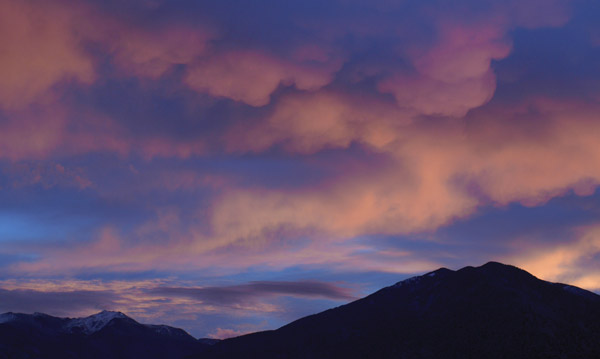
There’s another aspect of Auto ISO that allows you to set the slowest shutter speed you want the camera to factor in to the exposure equation. For example, say you are shooting with a vibration-reduction lens and you know that you can “get away” with shooting at 1/15 sec hand held. (Not that you want to shoot at that slow speed, as it can be chancy even with image stabilization lenses, but if need be that’s what you want to set as the “low limit”.) To do this you go in to the Auto ISO menu and set 1/15 sec. When calculating ISO the system will know that you have chosen a slower speed than it would normally “allow” for Auto ISO control. For example, when photographing inside Versailles’ famous hall of mirrors (#4) I wanted to make sure I had a good depth of field and enough light to see detail in the artwork on the ceilings. The crowd was such that I could not fiddle too much with settings, so I set the Auto ISO to 400 and the minimum shutter speed to 1/15 sec. With the VR lens on the camera I was able to get steady, deep depth of field shots at a fairly low ISO. Exposure at ISO 400 was f/8 at 1/15 sec.

Auto ISO can also come in very handy for sports and action photographers who want to shoot at high shutter speeds without having to constantly change ISO every time the light or action changes. For fast shutter speed work you’d first set Auto ISO to “unlimited”, or whatever the highest ISO the system offers. You would then set the lowest shutter speed to, say, 1/250 sec or whatever speed you think will catch the action for you. Then, setting the aperture to your needs (and if you’re working with a tele lens from the stands it could be as “narrow” as f/5.6) the camera will make sure the shutter speed does not drop below 1/250 and raises the ISO when needed. This prevents underexposure and gets you the shutter speed you need without having to go back and forth to change it on the camera and guarantee that you’d catch all the action you want.
This photo made at a rodeo (#5) illustrates Auto ISO with a high shutter speed/lower limit setting. Here I set the shutter speed to 1/500 sec and then let the system choose the other parts of the equation. Setting a minimum shutter speed means never having to miss an action shot again. This works very well when working in lower light levels, such as at a hockey game (#6). I was shooting fast and reacting to the action and didn’t have time to always check the settings, so I used Auto ISO and set the slowest shutter speed to 1/500 sec and highest ISO allowable, fast enough to capture the puck on the way to the net. In this shot the system chose ISO 1250 with an aperture of f/5.3.

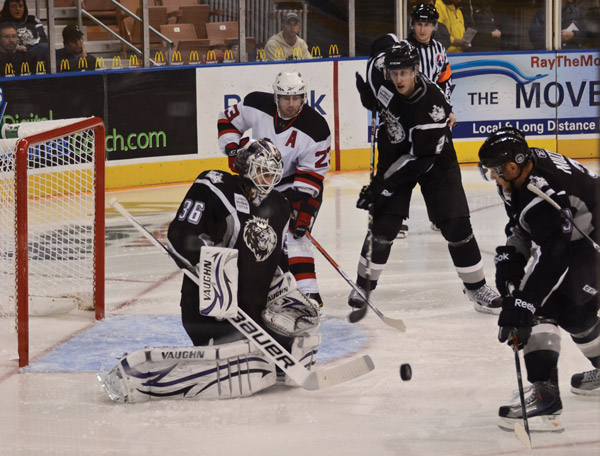
Having Auto ISO controls means that you can shoot more spontaneously and with more control over image quality than ever. It’s a matter of exploiting the camera’s sophisticated calculations to get you into more shooting, not into sitting there pondering how to set the exposure and ISO.
- Log in or register to post comments


